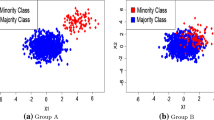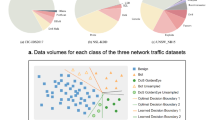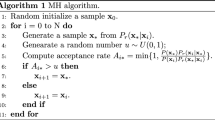Abstract
This paper introduces a recurrent network for mapping of interclass members without performing a learning process. This allows a member of class A to be mapped to a member of class B. Given sample members of each class, a backpropagation network is trained to form the corresponding class boundaries. Upon completion of the training process, the weights obtained are used in a recurrent network which performs the interelass member mapping without any further training. This mapping is achieved as the recurrent network evolves in time. The initial state of the network is mapped to its equilibrium state. The interclass member mapping network (IMMN) has many applications in self-correcting systems. In this paper, the IMMN is developed to represent two classes, namely class B (for instance, a class for representing members with desirable and correct features) and class A (members with incorrect features). The self-correcting aspect of the network is demonstrated by mapping a member from class A to a member of class B. Two examples are given. One represents a case of linearly separable classes. The other explores an application example, where two categories are used, namely, poorly and well-designed manufacturing parts. Given a poorly designed part, the network will suggest corrections resulting in a well-designed part. This example has nonlinear decision regions and shows the generalization capability of the network.
Similar content being viewed by others
References
Fletcher, R. (1987)Practical Methods of Optimization, 2nd Edition. John Wiley & Sons Chichester.
Han, J. Y., Sayeh, M. R. and Zhang, J. (1989) Convergence and limit points of neural network and its application to pattern recognition.IEEE Transactions on Systems, Man, and Cybernetics,19 (5), 1217–1222.
Hopfield, J. J. (1982) Neural networks and physical systems with emergent collective computational abilities.Proceedings of the National Academy of Science USA,79, 2554–2558.
IEEE (1988) A collection of review papers in the March 1988 issue ofComputer.
Kohonen, T. (1988)Self-Organization and Associative Memory, Springer-Verlag, Second Edition.
Lippmann, R. P. (1987) An introduction to computing with neural nets.IEEE ASSP Magazine,4 (2), 4–22.
Rumelhart, D. E. and McClelland, J. L. (1986)Parallel Distributed Processing: Explorations in the Microstructure of Cognition, MIT Press.
Sayeh, M. R. and Han, J. Y. (1987) Pattern recognition using a neural network,Proceedings of SPIE,848, 281–285.
Sayeh, M. R., Ragu, A. and Szu, H. H. (in preparation) Lyapunov Associative Memory.
Sayeh, M. R., Viswanathan, R. and Dhali, S. K. (1990) Neural networks for assessment of impact and stress relief on composite materials, inProceedings of the Material Technology Center Sixth Annual Conference, Carbondale, IL.
Author information
Authors and Affiliations
Rights and permissions
About this article
Cite this article
Sayeh, M.R., Athinarayanan, R. Interclass member mapping without retraining the network. J Intell Manuf 3, 277–284 (1992). https://doi.org/10.1007/BF01473904
Received:
Accepted:
Issue Date:
DOI: https://doi.org/10.1007/BF01473904




